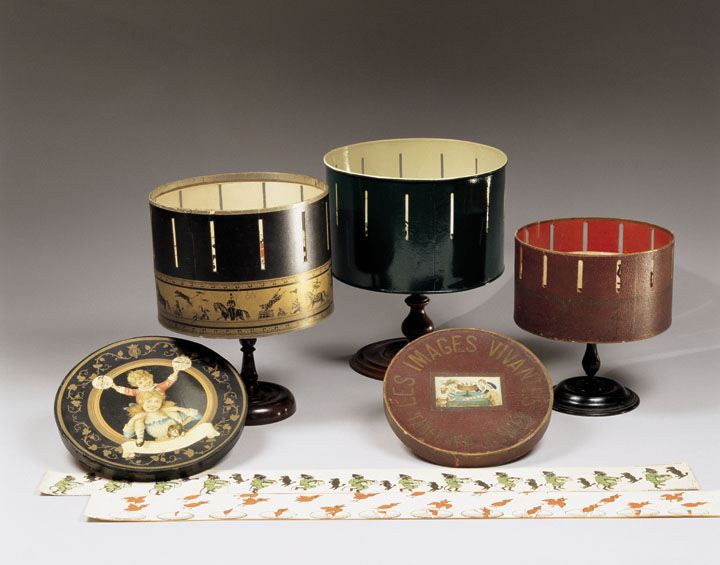Glossary Z
A - B - C - D - E - F - G - H - I - J - K - L - M - N - O - P - Q - R - S - T - U - V - W - X - Y - Z
Zoetrope
[Greek: zoe = to live; tropo = to turn)
Also known as Daedaleum, ‘wonder drum’ and ‘slit drum’ (in German), or ‘wheel of life’. Hollow cylinder with parallel axial slits, which can rotate rapidly on its own axis.

In 1834 the Englishman William George Horner (1786–1837) published an article On the Properties of the Daedaleum, a new Instrument of Optical Illusion, in which he not only gave a detailed description of the device, but also explained the reason for calling it a Daedaleum. This was a reference to Daedalus, the builder and sculptor from Greek mythology who is reputed to be the first to have sculpted humans and animals in motion. The zoetrope invites the viewer to look through slits at images on the opposite internal wall of the drum, which rotates on a vertical axle. Interchangeable picture strips with usually 11–13 sequential images are inserted into the drum. Several people can view the moving image at the same time.
A later variant of the zoetrope is the tachyscope, developed by Ottomar Anschütz (1890). In this device the drum can rotate both vertically and horizontally. Anschütz used his own series of photographs for his bands of figures, shot using glass negatives, and cut the viewing slits directly into the picture strips.
